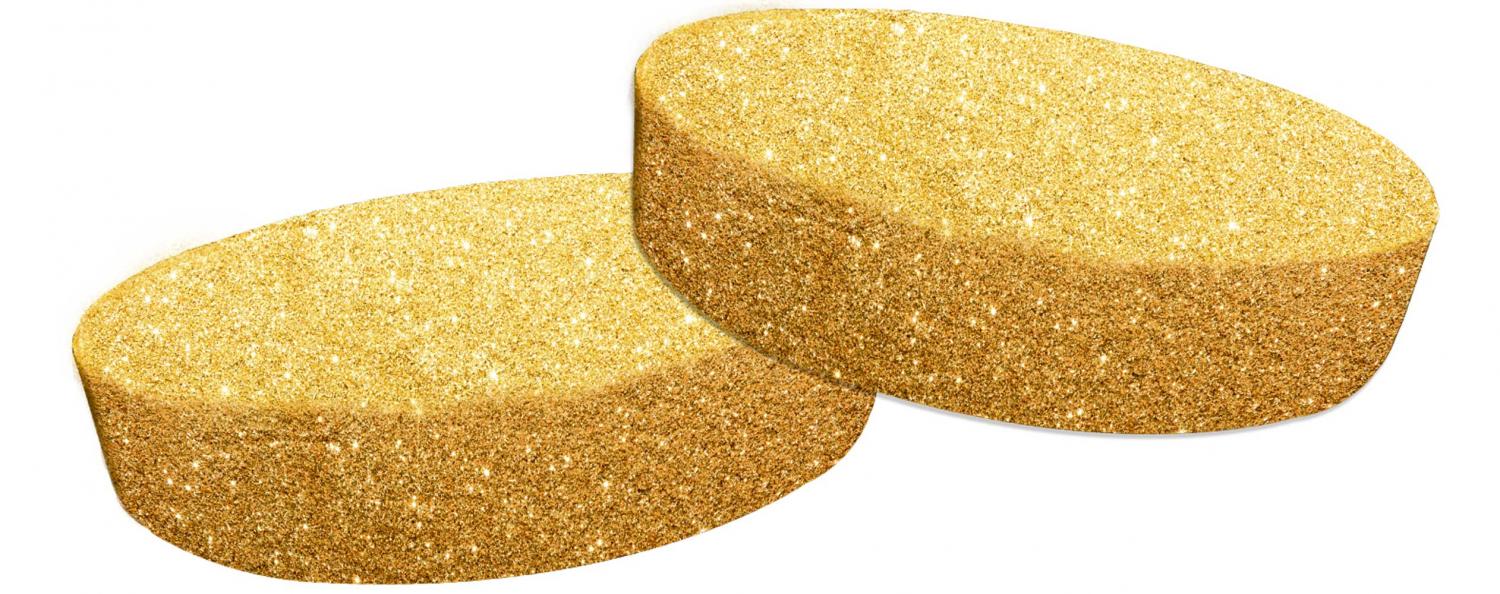How healthy is the gold of the Alps?
07.09.2020 Gstaad LivingOne often hears that cheese is high in fat and therefore unhealthy. On the other hand, it is claimed that Alpkäse (Alpine cheese) is better and healthier than conventional cheese. What is one to believe?
“Don’t laugh at me, but Alpkäse is the only cheese that my doctor and my wife let me have because of my high cholesterol level,” a relative, who is a bit older, told me with a wink of the eye some time ago as he was cutting off a generous piece of Saaner Alpkäse. Because it is good for your health, he eats some every day, he added.
I remember very clearly that I had certain doubts about his theory. After all, everyone knows that cheese is high in fat – whether from Alpine farming or elsewhere – and fat is well-known for its role in high levels of cholesterol, heart attacks, arteriosclerosis and other horrors.
I set out and questioned cheesemakers, marketers, scientists and a doctor. I wanted to know why Alpkäse should be better and healthier and what the whole thing had to do with fatty acids, Alpine herbs and manure.
Fatty acids, milk and grass
“Alpkäse contains valuable unsaturated fatty acids thanks to the Alpine grass and herbs”, says a brochure of CasAlp, the organisation for Berner Alpkäse and Hobelkäse (mature cheese served in rolls cut with a special cheese plane) AOP. So let’s first turn to the questions of what fatty acids are and how they get into the milk and finally into the (Alpine) cheese.
In simple terms, all fats consist of three different types of fatty acids in varying degrees and proportions: saturated fatty acids, which have long been considered problematic, and healthy mono- and polyunsaturated fatty acids such as omega-3 and omega-6. According to Dr Beat Reidy, professor of grassland utilization and ruminant systems at the University of Applied Sciences HAFL in Zollikofen, omega-3 fatty acids are abundant in grass and herbs on meadows. When cows digest grass, they absorb the fatty acids. “The more the cows eat grass and hay, the higher the proportion of these healthy fatty acids in the cheese”, says Reidy.
Numerous scientific studies and analyses – also of Saaner Bergkäse – confirm this. For example, in 2007 Professor Dr Gerhard Jahreis from the Institute of Nutritional Sciences at the Friedrich Schiller University in Jena certified the Alpkäse of the Steiner family from the Berschel area above Gstaad as having “unique” levels of omega-3 and other polyunsaturated fatty acids.
More unsaturated fatty acids?
In this context, it is remarkable that Dr Martin Scheeder, agricultural engineer and lecturer at the HAFL, noted that Swiss cheese contains approximately as many omega-3 fatty acids as salmon, which, together with other fatty sea fish such as herring or tuna, is considered an absolute star among the sources of omega-3.
Does Alpkäse contain more of these valuable, healthy fats than comparable cheese from the lowlands? Reidy declines: “The difference is probably not big because unlike many regions in Germany or Denmark, Swiss cattle receive an average of at least 75 percent grass fodder. He warns, however, that there is a growing tendency to use corn or concentrated feed to improve performance, which could have a negative impact on milk quality.
It is worth mentioning in this context that CasAlp stipulates for the production of Berner Alpkäse that during the summering period – the period during which it is permitted to produce Berner Alpkäse AOP – at least 90 percent of the feed must be “Alpine fodder”, i.e. grass, herbs or hay. Who knows, perhaps this is why Saaner Alpkäse has slightly more polyunsaturated fatty acids than other cheeses.
Alpine flora, organic farming and liquid manure
As the basis for a good cheese, the pasture and the place of production play an important role, as Reidy explains: “Depending on the herbs the cows eat, the taste, texture and colour of the cheese varies”. For example, caraway or Alpine butterwort give Alpkäse a special flavour. David Perreten, an organic dairy operator in Feutersoey with a summering farm on the Vordere Walig, adds: “In addition to processing and milking techniques, the ratio of grass and Alpine herbs plays an important role in milk quality”. Both should be represented. However, he is convinced that Alpkäse in general – organic or conventional – is a good, healthy product, as both are produced with artisanal techniques and in an overall natural setting.
And what effect does the liquid manure have on the cheese? Scheeder believes that no relevant effects on the fatty acid spectrum in milk fat are to be expected due to manuring. “Manure per se is not the problem”, confirms Reidy. But because liquid manure is often applied all year round and acts faster compared to regular manure, it can very well change the plant stock – he talks about the proliferation of so-called manure flora such as buttercup or chervil – and thus indirectly influence the quality of the cheese.
Cholesterol and cardiovascular diseases
In its general brochure, CasAlp stresses that unsaturated fatty acids are “good for our cardiovascular system”. And: “With every piece of Alpkäse you do something good for your health.”
Cholesterol is a vital blood fat produced in the liver. Among other things, cholesterol is involved in cell functions and the production of hormones. It flows with the blood through the body to the relevant organs and cells. This complex process can lead to deposits in the blood vessel walls, which can damage them and eventually lead to a heart attack or a stroke. If we eat foods rich in cholesterol excessively, we contribute to an increase of our blood fat levels.
Is this bad news for cheese lovers, even though we have seen that cheese from grazing animals has higher levels of omega-3 unsaturated fatty acids than cheese produced mainly from concentrated feed or maize? What are the consequences for our health?
In relation to omega-6 fatty acids – which are normally sufficiently covered in our diet by cereals, eggs, milk, meat and vegetable oils – we usually consume too few omega-3 fats in the form of fatty sea fish, nuts, seeds and vegetables, but also linseed and rapeseed oil. In relation to omega-6, more omega-3 in our diet leads to a better balance. This plays a decisive role in regulating the immune system, inflammations, blood vessels and blood pressure.
So all the more reason to have a piece of Alpkäse more often? On the one hand, yes, because it is full of important nutrients such as calcium, proteins and vitamins. Nevertheless, Gstaad-born Dr Christa Hauswirth Siegenthaler, physician and author of a dissertation on fatty acids in Alpkäse, urges people to enjoy it in moderation: “In comparison, Alpkäse does contain more omega-3 fatty acids. However, it is difficult to prove whether this has an immediate and relevant effect on our health. After all, it must be remembered that when you eat Alpkäse you consume a lot of fat and thus also energy”.
And the moral of the story?
Quite simply, Hans-Ruedi Steiner is certain that the question of whether Alpkäse is healthier or better was wrong from the start. What is more important to him is that our cheese is “good and tasty”, that it is healthy when consumed in moderation, and that it is produced by hand on our Alps with respect for nature.
And one more thing: It is probably best to follow Scheeder’s recommendation to fetch your piece of Alpkäse directly from the producer – visiting the Alp on foot. By the time you reach the Alp you will have burned enough calories and breathed enough healthy Alpine air to deserve a piece of cheese. After all, exercise is one of the best ways to get a grip on high cholesterol levels.
BASED ON AVS/MARTIN GURTNER-DUPERREX




